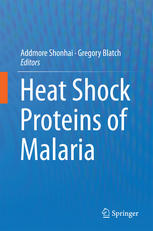

Most ebook files are in PDF format, so you can easily read them using various software such as Foxit Reader or directly on the Google Chrome browser.
Some ebook files are released by publishers in other formats such as .awz, .mobi, .epub, .fb2, etc. You may need to install specific software to read these formats on mobile/PC, such as Calibre.
Please read the tutorial at this link: https://ebookbell.com/faq
We offer FREE conversion to the popular formats you request; however, this may take some time. Therefore, right after payment, please email us, and we will try to provide the service as quickly as possible.
For some exceptional file formats or broken links (if any), please refrain from opening any disputes. Instead, email us first, and we will try to assist within a maximum of 6 hours.
EbookBell Team

0.0
0 reviewsThis book describes the role of heat shock proteins in the life cycle of malaria parasites. The work includes a general introduction on the structural and functional features of heat shock proteins. The main focus is on the role of heat shock protein families from Plasmodium falciparum, their role in protein folding and in the development of malaria pathology. The functions of individual families of heat shock proteins from plasmodium species and their cooperation in functional networks is described. Subcellular and extracellular organelles such as the apicoplast and the Maurer’s Clefts which are associated with plasmodium species, are discussed in detail. The role of heat shock proteins in the development and function of these organelles structures are highlighted. Although conceding that heat shock proteins may not be ideal antimalarial drug targets, prospects of targeting heat shock proteins in antimalarial drug discovery either directly and/or in combination therapies are explored.